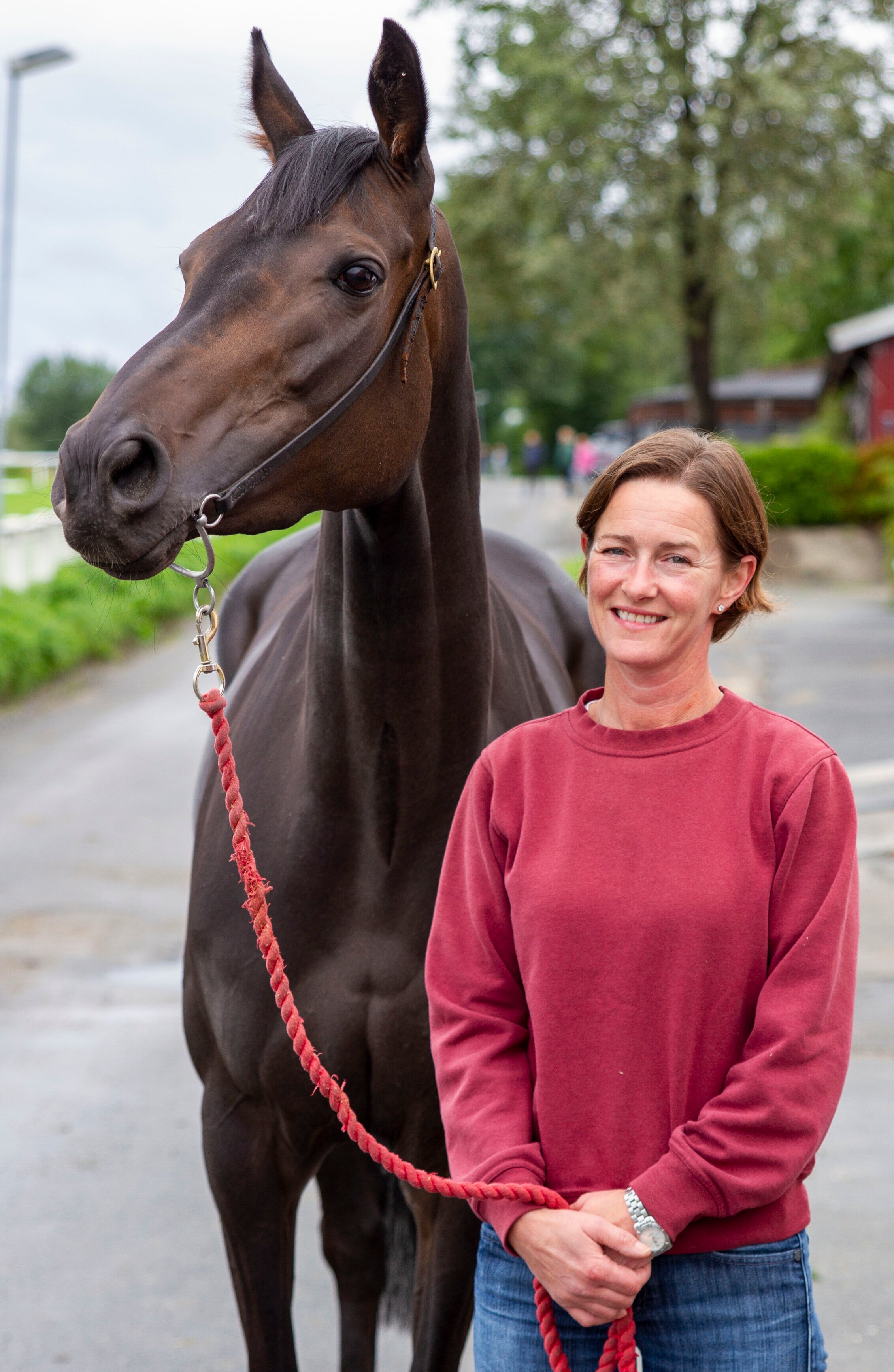Trainer Profile: Cathrine Erichsen
By Amie Karlsson
With 400 winners and plenty of pattern-race successes to her name, Cathrine Erichsen is the most successful female trainer ever in Norway.
This interview takes us to Oslo, or to be more precise, a 12-km drive northwest of the city center. Here, tucked away in a quiet residential area, we find Øvrevoll Galoppbane, the sole thoroughbred venue in Norway.
It is the end of August. Erichsen, an independent, charismatic woman with more than 400 winners under her belt, has just got back to routine again after the Norwegian Derby Weekend—the highlight of the Norwegian racing calendar a few days earlier.
Øvrevoll is where Erichsen participated in her first amateur race, saddled her first winner and enjoyed her first black type success. Today, it is where she cares for a string of almost 25 thoroughbreds. Erichsen is one of ten professional trainers at Øvrevoll—there are twenty in total in the country—and she has her base in one of the barns on the backstretch.
She has been training for half her life, but the last four years have been particularly fruitful. In the last three weeks of August, she had won two Gp3 races in Scandinavia with two different horses.
In the middle of summer, Øvrevoll is a beautiful place. Barns, outdoor boxes, lunge pits, paddocks and horse walkers are scattered around the backstretch and in the infield. It is charming and a little bit unpolished racing venue surrounded by mature trees, which provide green barriers between the racecourse and the adjacent villas.
Right now, November seems an eternity away, when freezing temperatures and just a few hours of daylight brings the racing season to a halt until the following April.
One would forgive a Norwegian racehorse trainer for complaining about the winters—even trainers living at latitudes far south of Norway tend to mutter and moan about the weather and training conditions of the winter months.
However, Erichsen’s view on training racehorses in Norway in the winter may come as a surprise.
She explains: “In my opinion, our strong winters is one of the particulars with training horses in Norway, but it is definitely one of the benefits. The cold gets rid of a lot of bacteria, and the snow is one of the best surfaces you can train horses on.”
“We use special shoes with studs which prevent the horses from slipping and snow rim pads that prevent snow packing into their feet. The track workers at Øvrevoll are great. They harrow the snow and make it into a nice training surface. It is smooth—and cold. What other surfaces are there that cool the horses’ legs whilst they train?”
Erichsen talks from experience. More than 35 winters have passed since she, for the first time, sat on a racehorse at the age of 12.
For a child growing up in Norway, horse racing may not be the first thing that springs to mind when given the opportunity to choose a hobby. But the young Cathrine liked horses, and a school friend happened to be the daughter of a racehorse trainer; and that is how Erichsen got acquainted with the racing industry.
It did not take long until her passion for horse racing was developed. When she turned 15 (the minimum age for race riding in Norway), she began a successful stint as an amateur rider.
“I was lucky to get the chance to ride in the Fegentri World Champion series for amateur riders. The race riding experience is a great benefit for me as a trainer, and I learnt a lot from riding in different countries.”
Despite the successful years as an amateur rider, Erichsen did not consider turning her hobby into a career. She had other plans in life and signed up for a degree in economics and marketing. For a while, her only connection to the racing industry was her riding horse, a retired racehorse.
“One day I needed to get hold of the farrier. I knew he would be shoeing in a stable at Øvrevoll that day, so I rang the trainer.”
The trainer answered, but before the phone was passed over to the farrier, Erichsen had found herself with a job.
“He asked if I wanted to come and ride out, and I thought ‘why not?’ I was studying and needed some money.”
What the economics student did not expect was that she, a year later, would have the sole responsibility for the stable.
“One day, after I had ridden out part-time for a year, the trainer told me that he had decided to retire from training. He offered me to take over his yard. At the time I was 25 years old and quite fed up with school, so I thought it could be a fun thing to do for a while.”
Erichsen with Gro Kittilsen and the mare Seaside Song (GB)
Being a trainer seemed quite easy, at least to start with. A stable full of race-fit horses, well-established routines, several loyal owners and an experienced employee who knew the stable inside out. Erichsen was off to a head start in the game of racehorse training.
“It was great. I didn’t have much experience, of course, but I got everything served: here is a barn, here are 14 horses, here is the girl who works for you. What I didn’t think about was that I soon would have to acquire new horses, recruit more owners and find new employees!”
Erichsen laughs when she recalls the beginning of her new career.
“When the employee some time later handed in her notice, it was certainly a cold shower for me. That wasn’t according to plan!”
There were times when the young Norwegian wished she had stayed far away from the racehorse business. …



